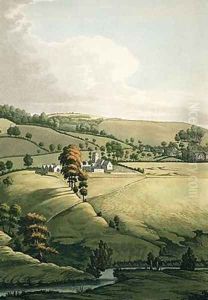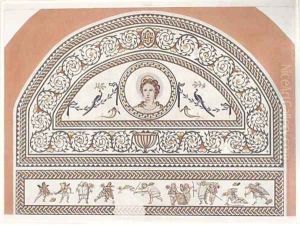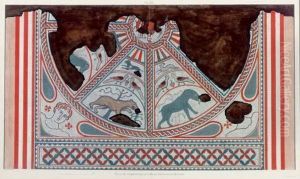Samuel Lysons Paintings
Samuel Lysons was an English antiquarian, archaeologist, and lawyer known for his scholarly work on Roman Britain and for his efforts in the field of numismatics, the study of coins. Born on May 17, 1763, in Rodmarton, Gloucestershire, he was part of a well-educated family; his younger brother, Daniel Lysons, was also notable for his topographical works.
Lysons' passion for the past was evident early in his life. He was educated at Bath Grammar School and later matriculated at St Mary Hall, Oxford, but left without taking a degree to pursue a career in law. However, his legal profession did not prevent him from devoting a considerable amount of time to his antiquarian interests.
Samuel Lysons became famous for his excavation of the Roman villa at Chedworth, Gloucestershire, in 1796, which played a significant role in the study of Roman Britain. His illustrations and descriptions of Roman antiquities, especially tessellated pavements and other architectural remnants, were highly accurate for the time, contributing valuable knowledge to the field. Lysons was also involved in excavating other Roman sites in Britain, such as those at Bath and Woodchester.
In 1786, Lysons was elected a Fellow of the Society of Antiquaries, and in 1797 he became a Fellow of the Royal Society, indicative of the respect he garnered in scholarly circles. He published a number of works during his lifetime, including 'Reliquiae Britannico-Romanae', which contained illustrations and descriptions of Roman artifacts from various parts of Britain. His meticulous illustrations helped to preserve the details of many Roman mosaics and other artifacts that would have otherwise been lost to time.
Despite his contributions to archaeology, Lysons' work has been criticized by later scholars for a lack of systematic methodology by modern standards. Nevertheless, his efforts laid important groundwork for future archaeological endeavors.
Samuel Lysons passed away on June 1, 1819, in London. His legacy lives on through his published works and the collections he amassed, which continue to be of interest to researchers studying the Roman period in British history. His papers and collections have been preserved in various institutions, including the British Museum, ensuring that his impact on the field of archaeology and antiquarian studies endures.


